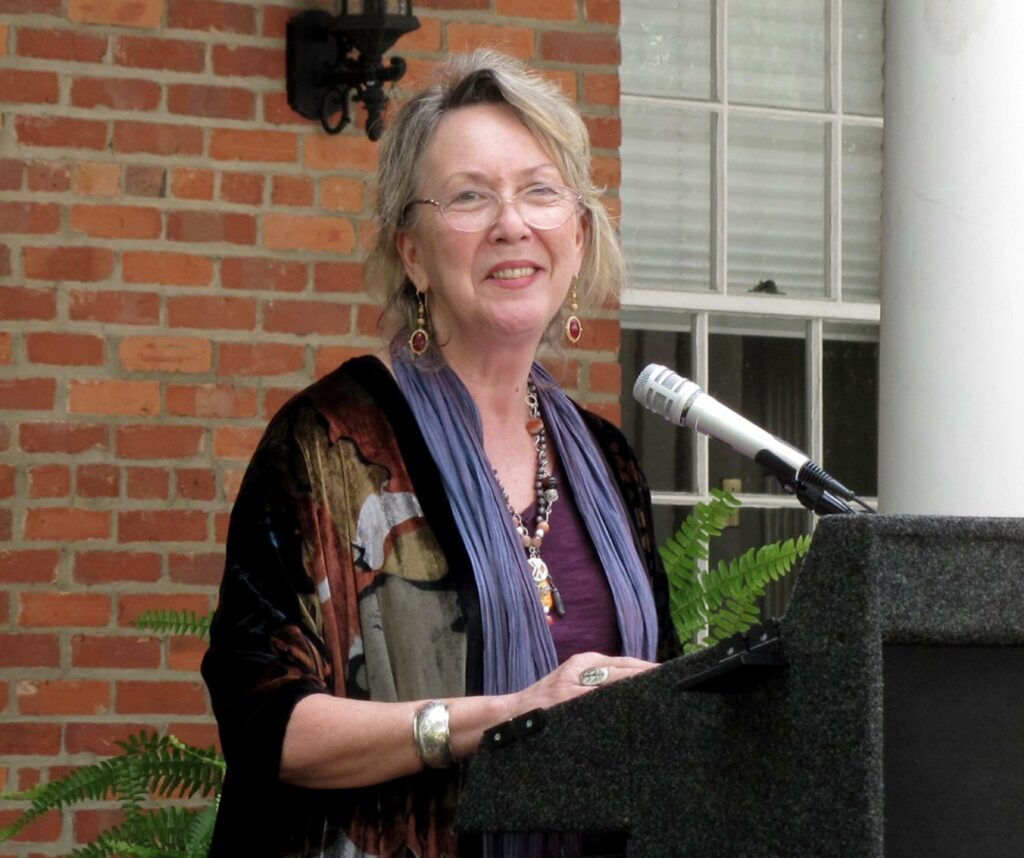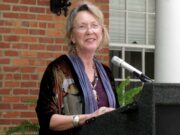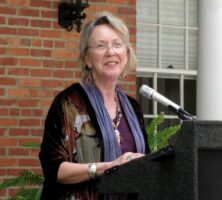Poet and essayist Kathryn Stripling Byer was a native of Georgia but set most of her poems in the mountains of North Carolina. Creating an identity that was both distinct and in line with the concerns of southern culture, Byer reclaimed in her poetry the traditions, customs, and voices of past Appalachian women. In doing so, she defined herself as an artist and, at the same time, addressed the concerns of women in today’s South.

Image from -ted
Early Life and Career
Byer was born in Camilla, in Mitchell County, in 1944 to C. M. Stripling, a farmer, and Bernice Campbell Stripling, a homemaker. She attended Wesleyan College in Macon and attained an M.F.A. from the University of North Carolina at Greensboro. There Byer studied with Allen Tate, Fred Chappell, and Robert Watson and won the Academy of American Poets Student Prize. While at UNC-G, Byer decided to make the North Carolina mountains her home, in large part, she says, because the mountains were “the place my grandmother had wanted to be when she died.”
Byer served as poet-in-residence at Western Carolina University (1988-98), UNC-G (1995), and Lenoir-Rhyne College (1999). Her work appeared in prestigious poetry and scholarly journals, including Poetry, Georgia Review, Southern Review, and Hudson Review. She published numerous essays, including the autobiographical “Deep Water” in Bloodroot: Reflections on Place by Appalachian Women Writers (1998) and “Turning the Windlass at the Well: Fred Chappell’s Early Poetry,” which was published in Dream Garden: The Poetic Vision of Fred Chappell (1997). She received numerous awards, including fellowships from the National Endowment for the Arts and the North Carolina Arts Council. Her second volume, Wildwood Flower (1992), received the Lamont Prize for the best second book by an American poet. In 2005 Byer was named poet laureate of North Carolina.
Style and Themes
Byer focused on the power and liabilities of the solitude she finds in the mountains. In her essay “Deep Water,” she addressed that solitude and what it has meant, historically, to women:
To the women living in these mountains years ago, singing must have seemed the only way they could travel…. [T]hey remained. They knew their place. They knew its jump-offs, its laurel hells, its little graves grown over with honeysuckle and blackberry briars. They knew the lay of cloud shadows rolling down one ridge and up another. And their place knew them. Out of that reciprocal knowing, they were able to sing their way through their solitude and into a larger web of voices.
It is this “larger web of voices” that Byer worked to recover. Girl in the Midst of the Harvest (1986), her first volume of poetry and her only collection set in rural Georgia, describes the difficult, often ambivalent relationship of a modern woman to the culture of the past. As she explained in “Wide Open, These Gates”:
… I’ve come a long way
from what’s been described as a mean and starved
corner of backwoods America. That has a ring
to it. Rhythm, like my grandmother’s hands
in the bread dough.
Byer’s attempts to connect with her cultural past dominate this volume. It is in Wildwood Flower that she began her exploration of Appalachian culture, a theme identified in the introductory poem, “At Kanati Fork,” in which the narrator encounters a ruined homestead and addresses its ghost, “a lone woman haunting the trail”:
“Who are you?” I asked the shade
where her milk bucket rusted to nothing
but rim. I saw, half-buried
under the leaf mold, a spoon catch the sun.In her basin
a mirror of water.
Byer intensifies and extends the theme of identification and reclamation in Black Shawl, her third volume. In this book the distinction between the present and past fades away; the narrators who speak are often ghosts or local women, and often the difference between them is indiscernible. The continuity of their concerns, the sense of the presentness of the past, and the illusory quality of the present informs each woman’s perspective. All these women have, Byer suggests, is the sense of continuity, their crafts, their collective life experiences and life-wisdom to sustain them. In the light of that wisdom, many of them mistrust or refuse outside influences. As Delphia, one of Black Shawl’s many personae, tells us:
Don’t ask me the big questions
none but a fool tries to answer
straight. All I can tell you of why
you were born is to take your own time
once the needle’s been threaded,
the stray thimble fetched from the cloth bag.
The strengths of these volumes are progressive, and each bespeaks the growth and vision of the poet.
Byer’s fourth volume of poetry, Catching Light (2002), deals with the experience of aging from a woman’s perspective. In 2003 she published Wake, a chapbook reflecting on the September 11, 2001, terrorist attacks in New York City and Washington, D.C. Coming to Rest (2006), her fifth volume of poetry, investigates the experience of homecoming.
Byer lived in Cullowhee, North Carolina, and was married to Jim Byer, a professor of nineteenth-century literature at Western Carolina University. They had one daughter, Corinna Lynette.
Byer died on June 5, 2017, after a lymphoma diagnosis. She was seventy-two.






